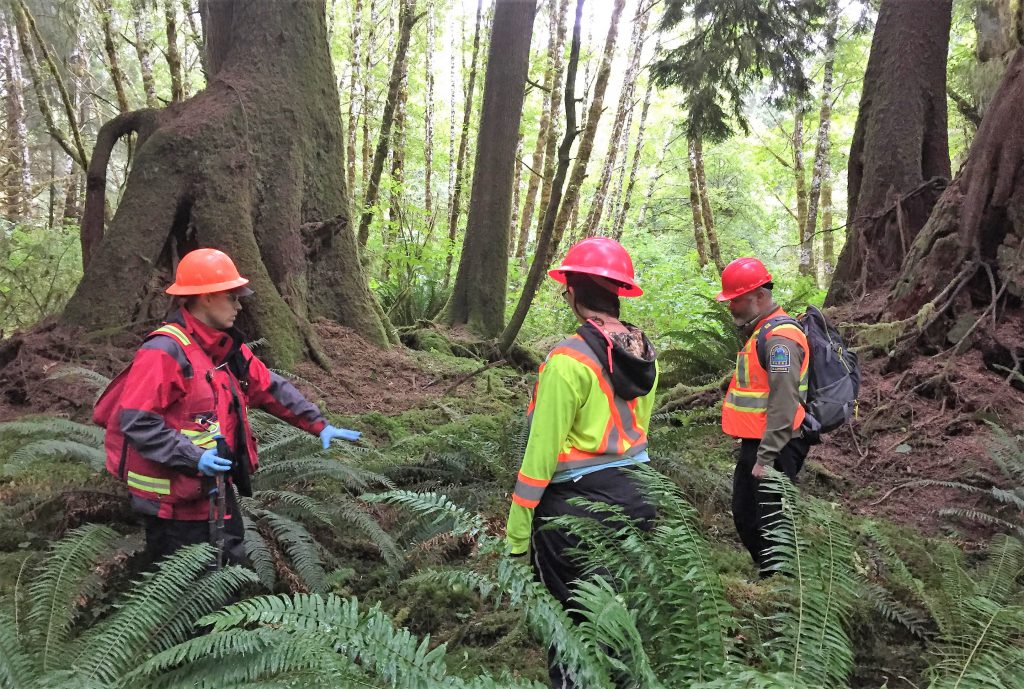Mapping project on Haida Gwaii reveals rare ecosystems
Categories:

Looking at the landscape of Naikoon Provincial Park on Haida Gwaii, Sharilynn Wardrop was left with more questions than answers.
A hand-drawn map created in the 1980s revealed little about the park’s bog, beach, dunes and lush rainforests. Wardrop, a BC Parks protected areas applied ecologist, and other experts, knew it was time to chronicle Naikoon’s ecosystems through terrestrial ecosystem mapping – a process that studies terrain conditions, soil characteristics and plants to create a map outlining different ecosystems. The project wound up revealing rare ecosystems found nowhere else in the province.
“The plant assemblages just aren’t like what we see in other places so there’s probably some pretty unique species that live there. I thought that was really cool,” said Wardrop, noting a partnership between the Haida Nation, the Ministry of Forests, Lands, Natural Resource Operations and Rural Development, and the Knowledge Management Branch of the Ministry of Environment and Climate Change Strategy was already in place to do work in the area, along with a plan to map all of Haida Gwaii. A big missing piece was Naikoon Provincial Park.
“We thought this was a good place to fill that gap since we didn’t know enough about what was there. Some people had a sense and there was a bit of survey data, but we had never mapped it. Now we can focus on figuring out what’s in some of these more rare and unique ecosystems.”
Naikoon is the traditional territory of the Haida Nation and figures prominently in Haida history and lifestyle. The Haida co-manage the park, which is comprised of coastal temperate rainforest, wetlands, bogs, sand dunes and approximately 100 kilometres of beaches.
Terrestrial ecosystem mapping helps BC Parks staff understand impacts to the park, such as climate change, and supports work to update the Naikoon Management Plan with the Haida Nation. It documents habitat condition for various species, where to find rare species and the location of rare or endangered ecosystems.
In September, local Haida, researchers and BC Parks staff spent two weeks in Naikoon Provincial Park, hiking into different plots to study plants and soil for the mapping project. They discovered unique shallow wetland ecosystems and found unique dune ecosystems on the beach. The work noted the impact of some human activities, such as ATV use creating informal trails into the interior of the park, and a population of feral cows roaming freely in the area for the past 80 years.
“Though the cows are a familiar sight in the park for locals, their presence was a surprise to me. They are eating down all the plants so it looks like a freshly mown lawn, adding to the significant impacts of browsing from the abundant deer population,” said Wardrop, noting the cows have stirred up the wetlands and sensitive dune ecosystems. “Now that we have documented the location and extent of these impacts, we can determine whether there are new ways we could be managing them.”
Mapping of Naikoon Provincial Park was fully funded through the BC Parks Licence Plate Program, which has generated more than $4 million toward protecting and preserving provincial parks.
Learn More:
To learn more about the BC Parks Licence Plate Program, visit:
www.env.gov.bc.ca/bcparks/licence-plates/
To learn more about Naikoon Provincial Park, visit:
http://www.env.gov.bc.ca/bcparks/explore/parkpgs/naikoon/
To learn more about BC Parks, visit: http://www.env.gov.bc.ca/bcparks/




